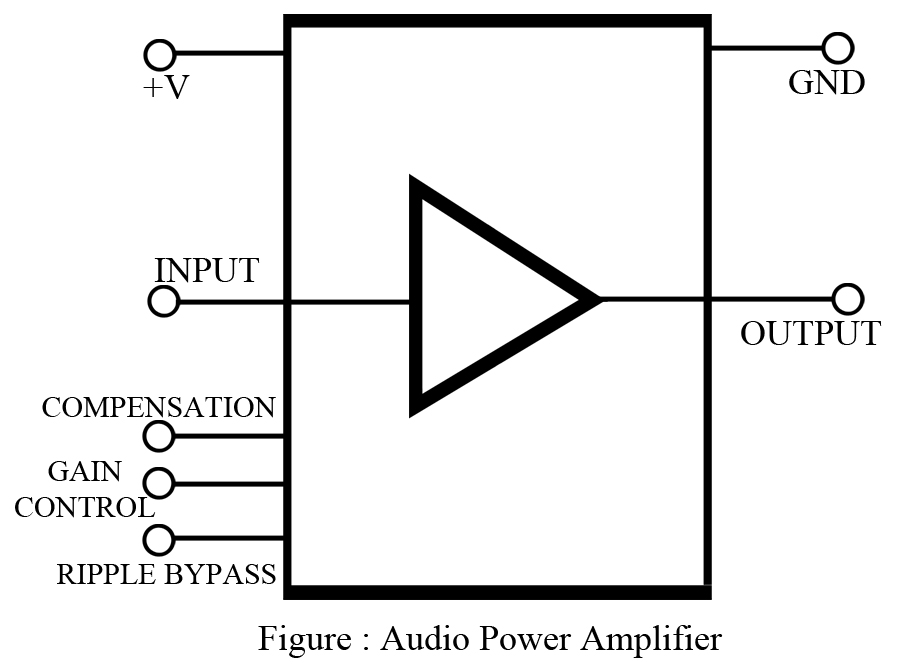Generally, audio power amplifier are low frequency (typically 40 Hz to 20,000 Hz) power amplifiers. Internally, they are designed as class B power amplifiers and offer reasonable power gain (5 to 10 watts typically, as well as low distortion figures. To handle the power dissipation required, most chips have several large, flat pins that are tied to ground and act as heat sinks. Chips such as these provide additional features as well, such as thermal shutdown protection, overvoltage protection, and frequency compensation. The output is designed to drive a low impedance load (a 4 ohm speaker is typical).
Some of the key parameters described below help to understand the working of IC clearly.
- Power output: – This is the specified power output of the device. The power is given for a specific resistance and frequency of operation. The power output will decrease if the source voltage is decreased.
- Total harmonic distortion: – Harmonic distortion is distortion caused by non-linear operation in an amplifier. The figure is expressed as a percentage of total output with 0.3% being a nominal value.
- Thermal considerations: – Since these devices are designed to deliver significant power to a load, the effects of the heat produced by the chip become a primary consideration in the construction and operation of circuits built around a power amplifier. Points worthy of attention include the physical mounting details and thermal power data. The large pins on the chip are used to whisk away heat and will do so efficiently if properly used. The manufacturer will usually provide information showing the best construction details for doing this. Derating curves, showing power dissipation vs temperature, indicate how power dissipation must be reduced if ambient temperature increases. The power dissipation specified for the chip is usually given at room temperature (25 °C).
Applications of audio power amplifier
Application possibilities for these chips include automobile radios, inexpensive audio equipment for the home, and part of the audio section of a television receiver

Thank you Eva Finch for suggestion.
But here in this section (i.e. Electronics Design) we are trying to post only about IC available in markets and its function with applications.
If you are interest in circuit and idea on amplifier, there is a amplifier circuit category.